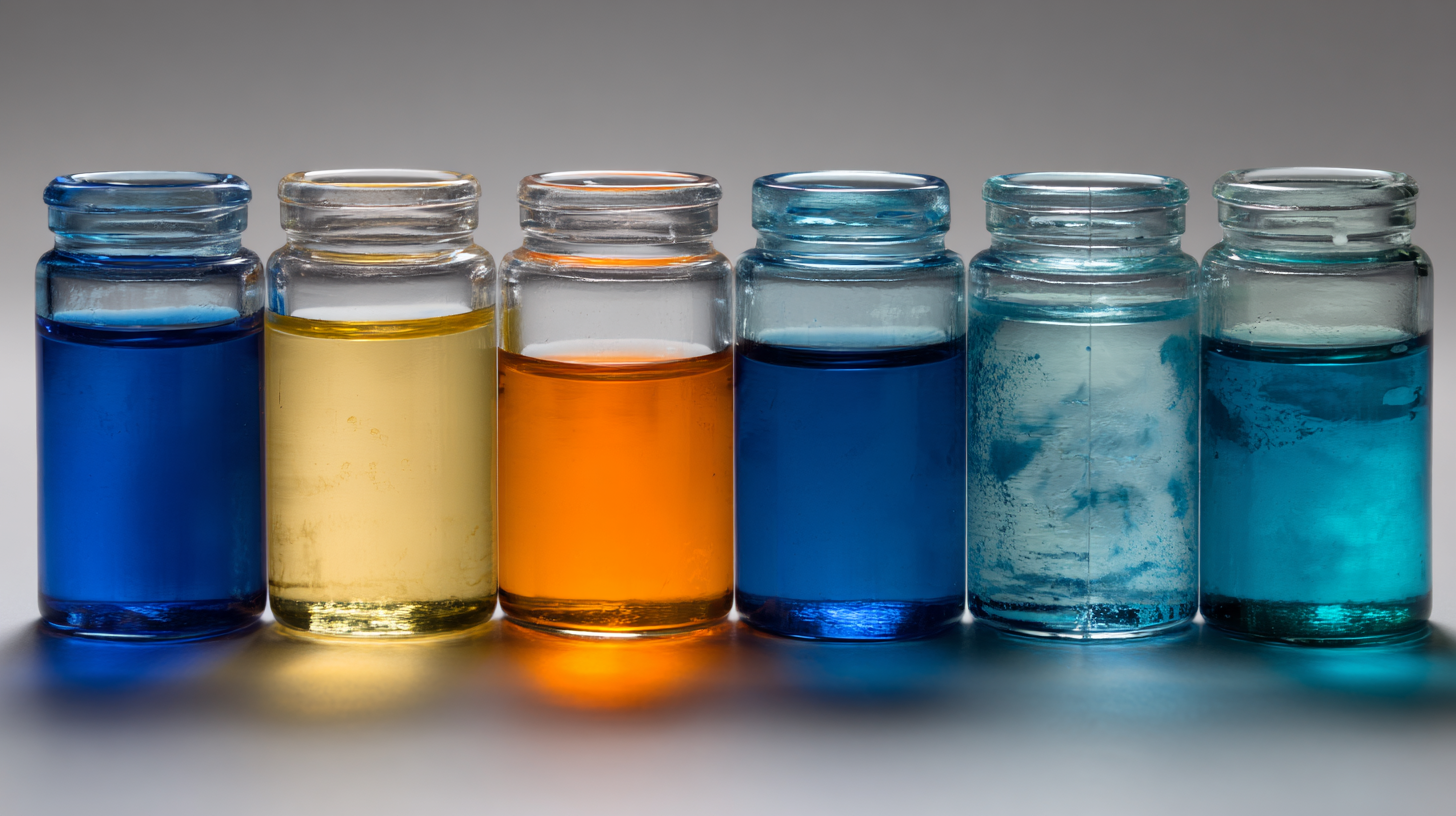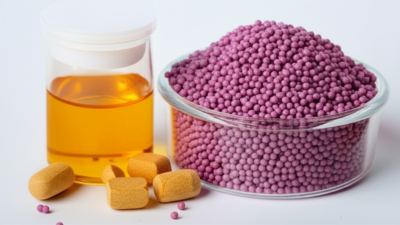Leave Your Message
The exploration of 8 Hydroxy 5 Nitroquinoline Applications has unveiled a myriad of possibilities across various fields in modern science and industry. This remarkable compound, known for its unique chemical structure, exhibits diverse properties that have piqued the interest of researchers and industrial professionals alike. From its role as a fluorescent dye in analytical chemistry to its applications in pharmaceuticals and material science, 8 Hydroxy 5 Nitroquinoline stands out as a versatile tool that enhances the efficiency and effectiveness of numerous processes. As advancements in technology continue to evolve, the potential of this compound to contribute to innovative solutions in environmental monitoring, biomedical research, and beyond cannot be overstated. This introduction sets the stage to delve deeper into the fascinating applications and implications of 8 Hydroxy 5 Nitroquinoline in today’s scientific landscape, highlighting its significance and future potential.

8 Hydroxy 5 Nitroquinoline, a compound with a unique chemical structure, has garnered increasing attention in various fields of modern science and industry. The molecular configuration of this compound includes a quinoline ring modified with hydroxyl and nitro groups, which significantly enhance its reactivity and versatility. According to a recent report published by the Journal of Chemical Research, the presence of the hydroxyl group allows for enhanced solubility in polar solvents, facilitating its application in pharmaceuticals and agrochemicals.
In addition to its solubility, the nitro group on the quinoline skeleton provides 8 Hydroxy 5 Nitroquinoline with notable electron-withdrawing properties. This is particularly advantageous in the synthesis of complex organic molecules, underpinning applications in drug design and development. A study from the International Journal of Organic Chemistry highlighted that compounds containing electron-withdrawing substituents exhibit improved bioactivity, making 8 Hydroxy 5 Nitroquinoline a candidate for further exploration in anticancer research. Its distinct chemical properties not only bolster its importance in laboratory settings but also lay the groundwork for advancements in industrial applications, such as dye manufacturing and the development of novel catalysts.
 8 Hydroxy 5 Nitroquinoline has emerged as a significant compound in the field of pharmaceuticals, showcasing versatile applications in drug development and therapeutic uses. Its unique chemical structure allows for interaction with various biological pathways, leading to its exploration in the treatment of multiple diseases. Researchers have identified its potential as an antitumor agent, where it exhibits cytotoxic effects against cancer cells, thereby opening new avenues for targeted cancer therapies.
8 Hydroxy 5 Nitroquinoline has emerged as a significant compound in the field of pharmaceuticals, showcasing versatile applications in drug development and therapeutic uses. Its unique chemical structure allows for interaction with various biological pathways, leading to its exploration in the treatment of multiple diseases. Researchers have identified its potential as an antitumor agent, where it exhibits cytotoxic effects against cancer cells, thereby opening new avenues for targeted cancer therapies.
In addition to its antitumor properties, 8 Hydroxy 5 Nitroquinoline is being investigated for its antimicrobial activities. Studies indicate that it can inhibit the growth of various pathogens, making it a candidate for developing new antibiotics. Furthermore, its ability to cross the blood-brain barrier is particularly promising for neurological disorder treatments, offering hope for conditions such as Alzheimer’s and Parkinson’s disease. The ongoing research into its mechanisms and efficacy aims to harness its therapeutic potential fully, positioning 8 Hydroxy 5 Nitroquinoline as a crucial component in modern pharmaceutical innovation.
8 Hydroxy 5 Nitroquinoline (8-HNQ) has emerged as a pivotal reagent in the realm of analytical chemistry. Its unique chemical properties, particularly its ability to form stable complexes with various metal ions, have made it an ideal candidate for applications in environmental monitoring and industrial analysis. According to a recent report by the American Chemical Society, the demand for innovative reagents like 8-HNQ in the detection of heavy metals in water samples has surged by over 30% in the last five years, highlighting its increasing importance in maintaining environmental safety and compliance with regulatory standards.

Moreover, 8-HNQ's versatility extends to pharmaceutical analysis, where it is utilized in the quantification of drug compounds and their metabolites. A study published in the Journal of Chromatography has shown that 8-HNQ-based methods provide a detection limit as low as 0.1 µg/mL for certain pharmaceutical agents, significantly enhancing the sensitivity and specificity of analytical methodologies. This capability not only streamlines the drug development process but also assists in ensuring the rigorous standards of quality control required in the pharmaceutical industry, reflecting a notable advancement in analytical techniques reliant on 8 Hydroxy 5 Nitroquinoline.
8-Hydroxy-5-nitroquinoline (8-HNQ) is emerging as a key player in the field of dyes and pigments, thanks to its unique chemical structure and properties. This compound exhibits strong absorption characteristics, making it ideal for use in colorants that require stability and vibrancy. In industrial applications, 8-HNQ is utilized in producing textile dyes, which not only provide vivid colors but also enhance the durability of the fabrics against fading and washing. Beyond textiles, its applications extend into plastics and coatings, where it acts as a colorant and stabilizer, ensuring longevity and aesthetic appeal.
**Tips:** When using 8-HNQ in dye formulations, it’s essential to consider the solubility of the compound in different solvents. This affects the final color intensity and application methods. Additionally, always conduct a small-scale test to check for compatibility with substrates before moving to larger batches, as this can save time and resources in production.
The versatility of 8-HNQ also allows for innovative combinations with other compounds to create novel pigments that meet specific industry demands. For instance, by modifying the chemical structure, manufacturers can tailor the properties of these pigments, achieving desired effects such as heat resistance or varying degrees of color saturation. As industries continue to seek sustainable and efficient color solutions, 8-HNQ stands out as a compound worth exploring further.
| Application Area | Use | Benefits | Environmental Impact |
|---|---|---|---|
| Dyes | Textile and Paper Dyes | Vibrant color, high fastness | Biodegradable options available |
| Pigments | Inks and Coatings | Stability and lightfastness | Low toxicity formulations |
| Pharmaceuticals | Active Ingredients | Wide-ranging therapeutic benefits | Ongoing research for eco-friendly synthesis |
| Agriculture | Pesticides | Effective pest control | Potential for integrated pest management |
The safety and environmental considerations surrounding the use of 8 Hydroxy 5 Nitroquinoline (HNQ) are increasingly critical as its applications expand across various scientific and industrial fields. Recent studies highlight the need for effective detection methods for HNQ in environmental settings, particularly in industrial wastewater. A notable advancement in this area is the dual-mode electrochemical evaluation technique, which has demonstrated high sensitivity and specificity for HNQ. This method, using modified electrodes, allows for real-time monitoring of HNQ concentrations, an essential factor in assessing potential environmental impacts.
Environmental reports indicate that while HNQ holds promise for applications in sensor technology and pharmaceuticals, its potential toxicity necessitates stringent regulatory measures. According to the latest data on chemical safety, prolonged exposure to HNQ can lead to harmful effects on aquatic organisms, highlighting the importance of developing robust detection systems to mitigate environmental contamination. The implementation of such electrochemical detection methods can help industries comply with safety regulations, ensuring that HNQ levels remain within permissible limits while maximizing its potential benefits in research and industry.






